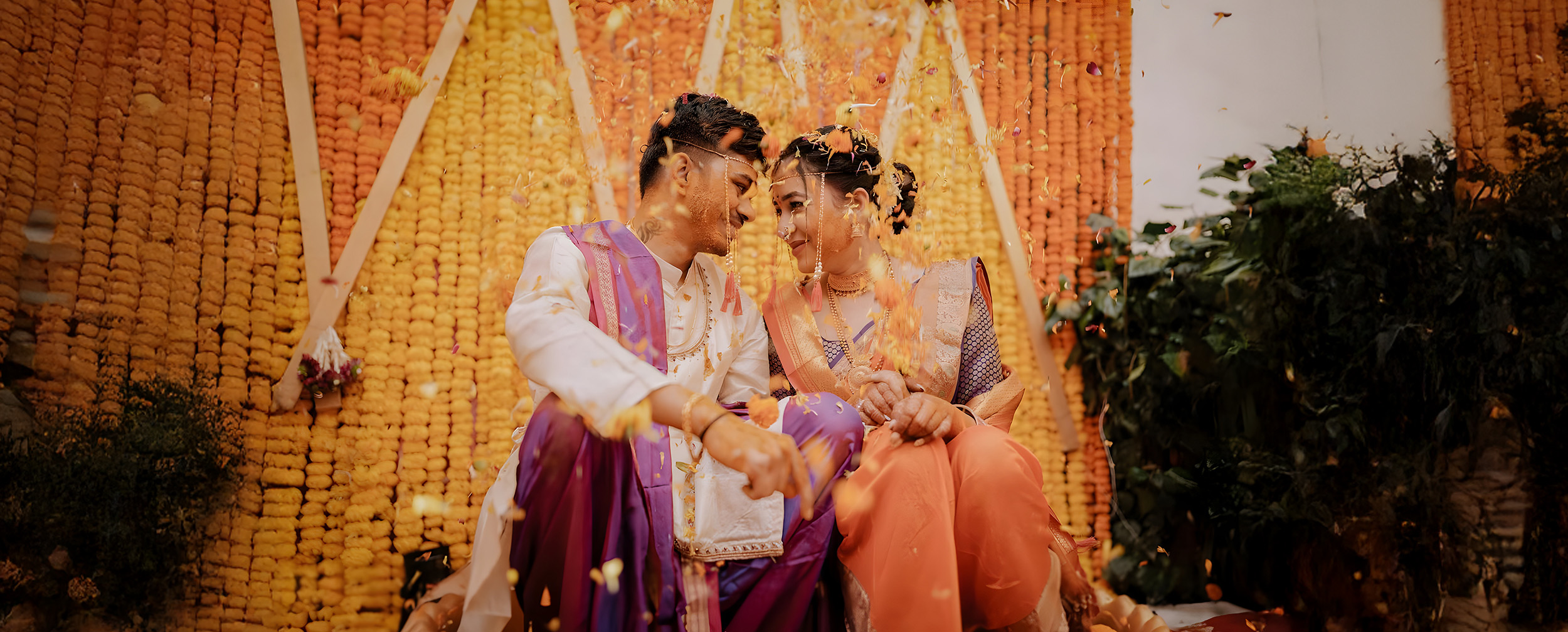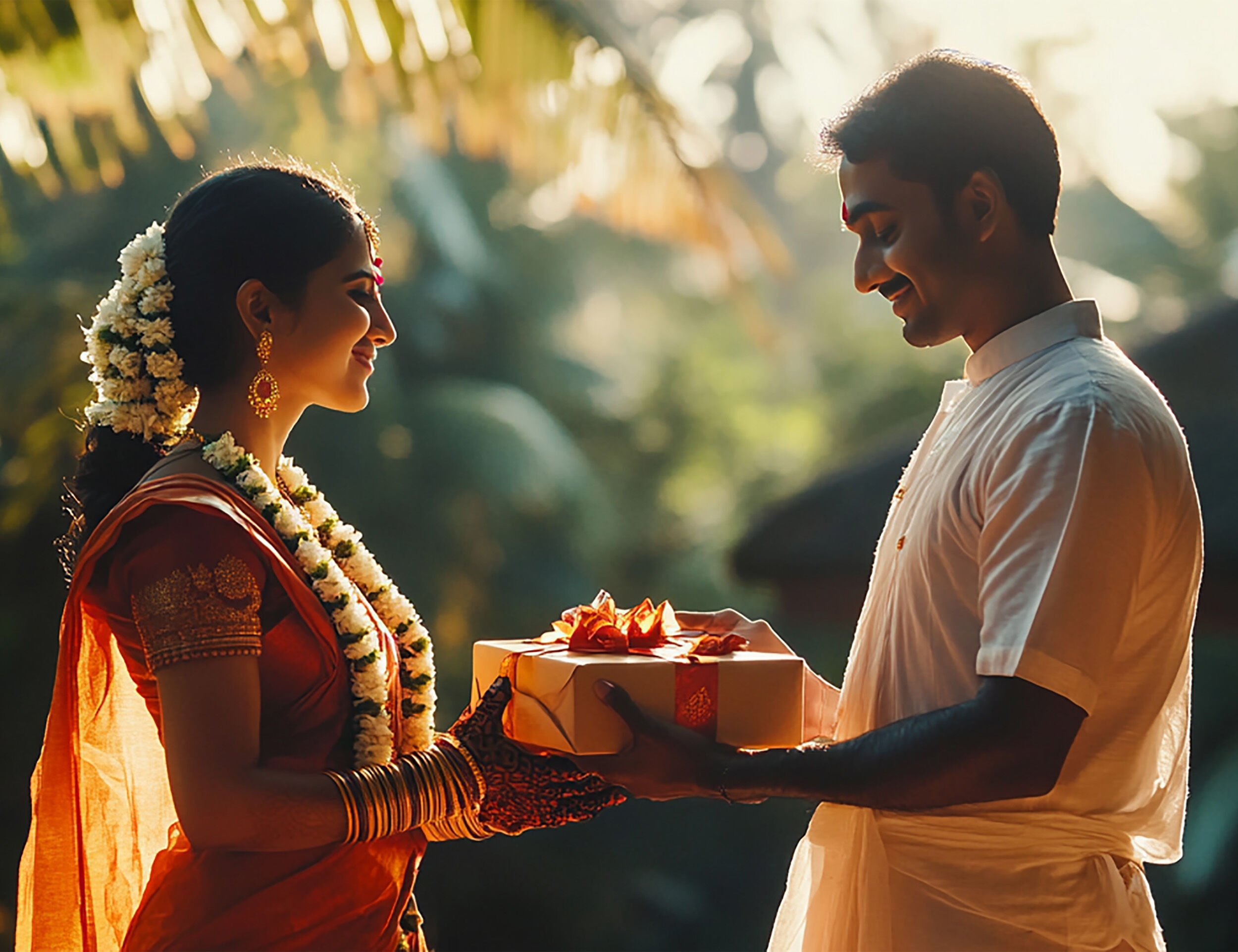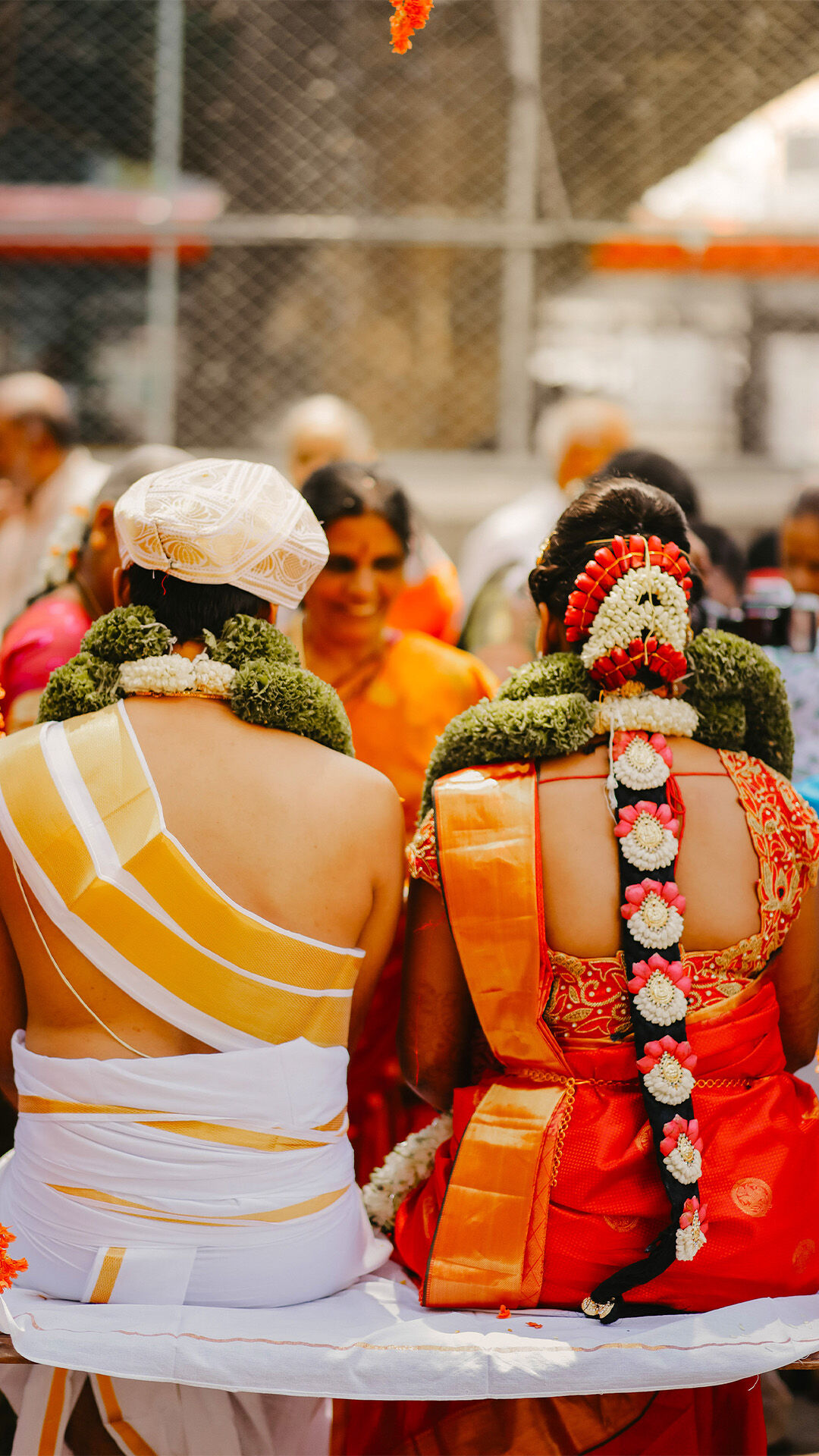STORIES BY MANYAVAR & MOHEY

Lifestyle
A Tale of Two Weddings: South Indian vs North Indian Wedding Celebrations
Date 15 April 2025 Reading time: 7-10 mins
As the shehnai echoes through the air and the fragrance of fresh marigolds wafts by, an Indian wedding comes alive in all its splendour. But amidst the common threads of joy and celebration, the tapestry of Indian weddings is woven with diverse hues. From the snow-capped peaks of the Himalayas to the sun-kissed shores of Kanyakumari, wedding festivities take on distinct flavours, each region adding its own special ingredient to the grand feast. This brings us to the intriguing debate of South Indian vs North Indian wedding traditions. Let's embark on a journey to unravel the fascinating differences between North Indian and South Indian weddings.
The charm of the South Indian vs North Indian wedding lies in its cultural contrasts, from the pre-wedding rituals to the grand finale, each region offers a unique experience.
Understanding the Diversity of Indian Weddings
India is a land where the language changes every few hundred kilometres, as do the customs and traditions. This diversity is most evident in the grand celebration of a wedding. While the essence of the sacred union remains the same, the way it is celebrated differs strikingly from South Indian vs North Indian wedding traditions.
In North India, weddings are often a gala affair, spread over several days, each marked by a unique function. The engagement, or 'sagai, ' kicks off the festivities, followed by the lively mehndi, the musical sangeet, and the sacred haldi ceremonies. The wedding itself is usually an evening affair, with the groom making a grand entrance in the 'baraat' amidst much pomp and show. This stands in stark contrast to the South Indian wedding celebrations, where the focus is more on tradition and rituals.
Down South, weddings, though equally joyous, often begin at the break of dawn. The muhurtam, or auspicious time, dictates the ceremony, which is usually an intimate affair with close family and friends. The focus is more on the religious rituals, with each custom holding deep symbolic significance reflecting the differences in South Indian vs North Indian wedding traditions.
The Significance of Wedding Attire in Indian Festivities
Amidst the myriad of differences, one common thread that runs through all Indian wedding rituals is the importance of the bridal attire. The bride's ensemble is not just a fashion statement but a reflection of the region's culture and traditions.
In North Indian weddings, the bride is usually decked in a heavily embellished lehenga, often in shades of red, maroon, or pink. The lehenga is paired with a choli or blouse and a dupatta, which is draped over the head during the ceremony. The look is completed with grand jewellery, including a maang tikka, nath, and heavy necklaces, all integral parts of the wedding rituals.
In contrast, South Indian brides opt for silk or art silk sarees, usually in bright hues like green, yellow, or orange. The saree is worn with a fitted blouse and accessorised with gold jewellery, including a matha patti, necklaces, and bangles that often cover the entire arm up to the elbow.
Wedding Festivities in North India
The Grandeur of North Indian Weddings
North Indian weddings are known for their grandeur and extravagance. From the elaborately decorated wedding venues to the multi-cuisine spread, every aspect of the celebration is a testament to the 'bigger is better' philosophy.
The festivities usually span 3-5 days, each marked by a different function. The mehndi ceremony, where the bride's hands and feet are adorned with intricate henna designs, is a riot of colour and laughter. The ladies of the house sing traditional songs while the bride sits patiently for hours as the mehndi artist works her magic.
The sangeet, another key pre-wedding event, is a musical night where both families come together to dance, sing, and make merry. Bollywood music, choreographed dances, and sometimes even professional performances mark this lively function.
Popular Wedding Attires in North India
The Elegance of Banarasi Saree and Sherwani
While lehengas are the go-to choice for North Indian brides, the Banarasi saree also holds a special place. Known for its fine silk, intricate zari work, and opulent golden hue, the Banarasi saree is a symbol of royalty and is often worn by the bride's mother or grandmother.
For the groom, the sherwani is the attire of choice. This long, coat-like garment is usually made of silk or brocade and is decorated with intricate embroidery, often in golden or silver threads. It is paired with a churidar or fitted pants and a pagdi or turban.
The Comfort of Kurta Pajama and Nehru Jacket
For the other functions, men often opt for a more comfortable yet stylish kurta pajama. The kurta, a loose, flowing shirt, is teamed with pajamas, which are loose, drawstring pants. A Nehru jacket or waistcoat adds a touch of formality to the outfit.
Women, on the other hand, have a plethora of options, from lehengas to sarees to Indo-Western outfits. The latter, a fusion of Indian and Western styles, has gained popularity in recent years. Think a crop top with a lehenga skirt or a gown with an Indian-inspired print.
Wedding Festivities in South India
The Simplicity and Elegance of South Indian Weddings
In contrast to the extravagance of North Indian weddings, South Indian weddings are often more understated affairs. The focus is on the religious ceremonies and rituals, each of which holds deep significance.
The wedding usually takes place in the morning, at an auspicious time or muhurtam. The ceremony is held in a mandapam, a temporary structure erected for the purpose, which is decorated with flowers, usually jasmine and marigold.
Before the wedding, the bride and groom go through several rituals. The bride has a ceremonial bath called the 'Gauri Pooja,' where she is adorned with flowers and jewellery. The groom, on the other hand, performs the 'Kashi Yatra', a symbolic pilgrimage.
Popular Wedding Attires in South India
The Grace of Saree and Kurta for Men
The saree is the staple attire for South Indian brides. Usually made of silk, art silk, etc, these sarees are known for their rich colours and intricate gold borders. The Kanchipuram silk saree, in particular, is a favourite among brides.
Men, on the other hand, wear a kurta or shirt with a dhoti, a long piece of cloth tied around the waist. The groom often wears a silk kurta with an intricate print and a silk dhoti with a golden border.
The Trend of Indo-Western Outfits and Lehenga
While classic attires still dominate South Indian weddings, there is a growing trend of Indo-Western outfits and lehengas. Many brides now opt for a lehenga for the reception or a pre-wedding function. These lehengas often incorporate South Indian elements, like a Kanjeevaram silk blouse or a temple jewellery-inspired design.
Indo-Western gowns, which blend the silhouette of a Western gown with Indian embellishments and fabrics, are also gaining popularity. These offer a comfortable yet stylish alternative to the saree.
Comparing Wedding Festivities: North India vs South India
Differences in Wedding Attires
One of the most striking differences between South Indian vs North Indian wedding is the attire. While North Indian brides are decked in lehengas and sarees in shades of red, maroon, and pink, South Indian brides opt for silk or art silk sarees in bright hues like green, yellow, and orange.
The jewellery also differs significantly. North Indian brides wear heavy jewellery, often in gold or polki, including a maang tikka, nath, and multilayered necklaces. South Indian brides, on the other hand, wear gold jewellery, including a matha patti, a long necklace called the mangalsutra, and bangles covering most of their arms.
For men, the sherwani and kurta pajama are popular in North India, while the kurta and dhoti are the usual choices in South India. However, with changing times, many grooms are now opting for Indo-Western outfits like a kurta with a Nehru jacket and trousers.
The Beauty of Diversity in Indian Wedding Festivities
As we come to the end of our journey through the vibrant landscape of Indian weddings, one thing becomes clear – the beauty lies in the diversity. Each region has its own unique traditions, attires, and customs, adding to the rich tapestry of Indian culture.
Whether it's the grandeur of a North Indian wedding or the spiritual essence of a South Indian wedding, each celebration is a reflection of the cultural heritage and values that shape the lives of the people.
For those looking to embrace the essence of these beautiful traditions, Manyavar and Mohey offer an exceptional range of wedding attire. Our carefully curated collections beautifully combine timeless tradition with contemporary elegance, ensuring that every bride and groom can find the perfect ensemble to celebrate their special day.







